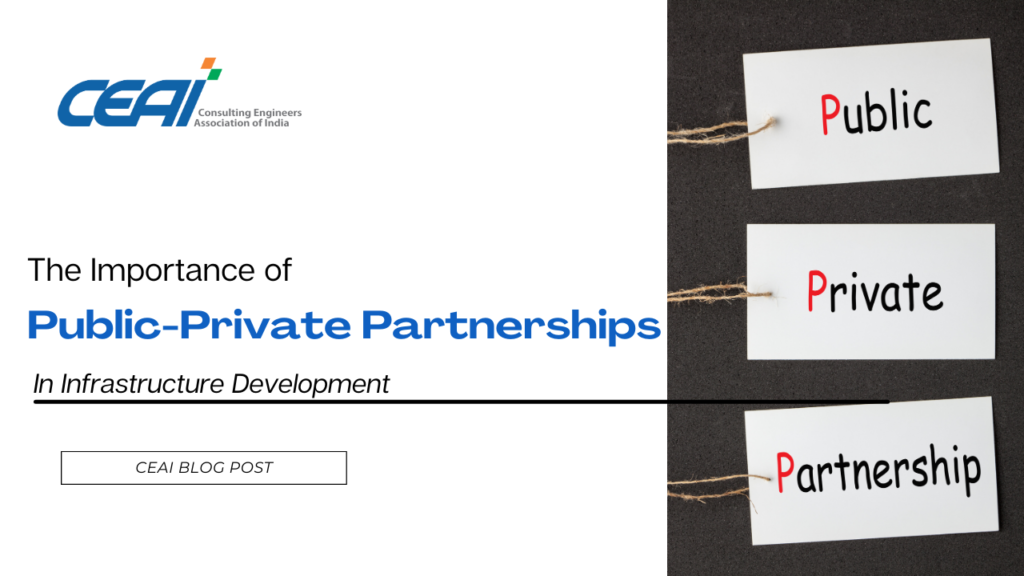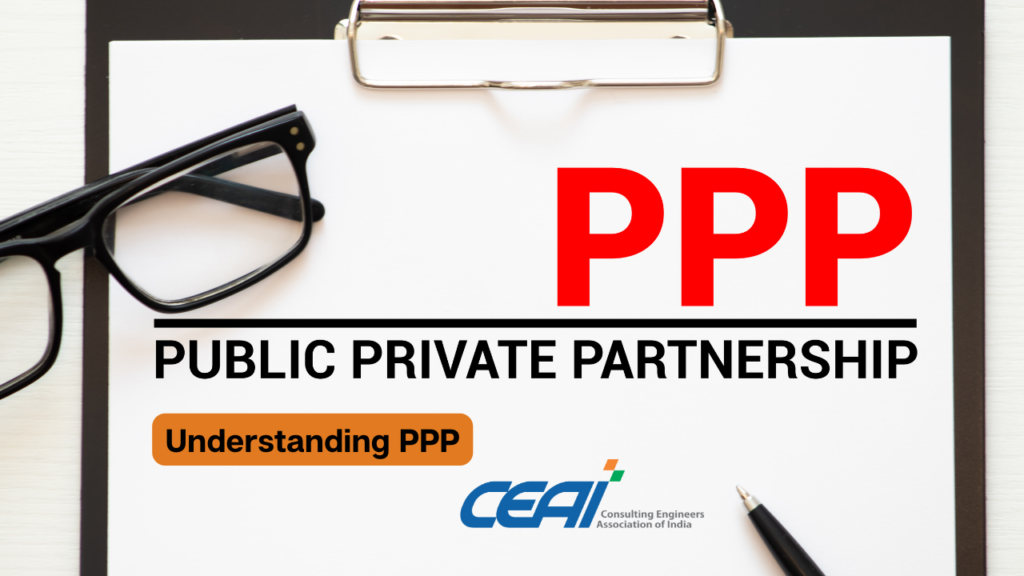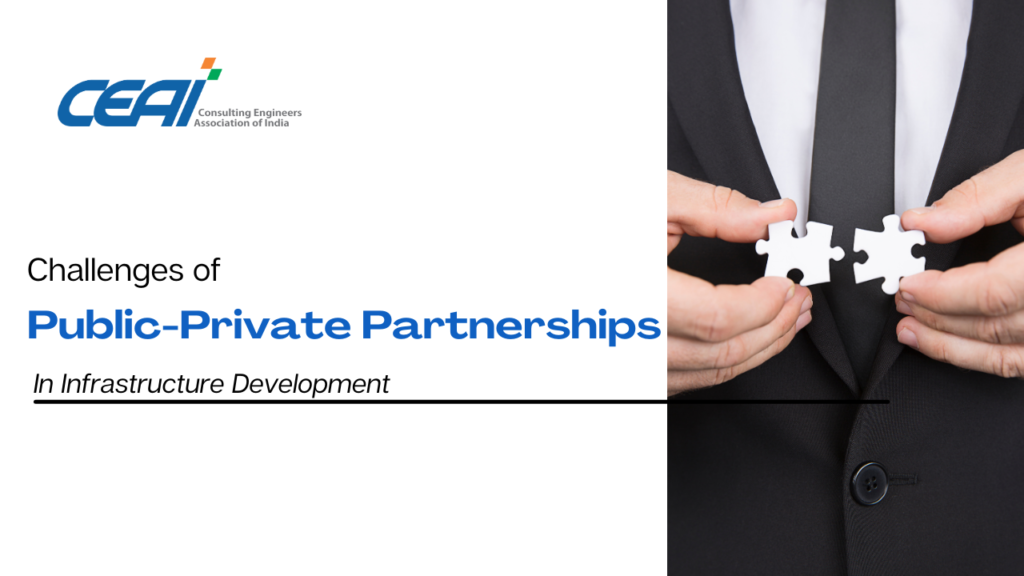
Infrastructure development is the backbone of any thriving economy, providing essential services and enabling economic growth. However, the scale and complexity of modern infrastructure projects often require collaboration between various stakeholders. Public-Private Partnerships (PPPs) have emerged as a powerful model to address these challenges, combining the strengths of both the public and private sectors. This blog explores the importance of PPPs in infrastructure development from a CEAI perspective, highlighting their benefits, challenges, and strategies for successful implementation.
Understanding Public-Private Partnerships

A Public-Private Partnership is a collaborative agreement between government entities and private sector companies to finance, design, construct, operate, and maintain infrastructure projects. PPPs leverage the expertise, resources, and efficiencies of the private sector while ensuring public oversight and accountability.
Benefits of PPPs in Infrastructure Development
1. Enhanced Efficiency and Innovation
Private sector companies often bring innovative solutions and efficient project management practices to the table. This can lead to faster project delivery, reduced costs, and improved quality of infrastructure.
2. Access to Capital
PPPs provide access to private sector funding, reducing the financial burden on public budgets. This allows governments to undertake large-scale infrastructure projects without diverting funds from other essential services.
3. Risk Sharing
By distributing risks between public and private partners, PPPs can mitigate the financial and operational risks associated with complex infrastructure projects. This risk-sharing mechanism enhances project sustainability and resilience.
4. Long-Term Sustainability
PPPs often involve long-term contracts that ensure ongoing maintenance and operation of infrastructure. This long-term perspective promotes the sustainability and durability of assets, benefiting communities for years to come.
5. Improved Public Services
Collaborative efforts in PPPs can lead to the development of high-quality infrastructure that enhances public services, such as transportation, healthcare, education, and utilities. This, in turn, improves the overall quality of life for citizens.
Challenges of Implementing PPPs
While PPPs offer numerous benefits, they also present certain challenges that need to be addressed for successful implementation:
1. Complex Negotiations
Negotiating PPP agreements can be complex and time-consuming, requiring careful consideration of legal, financial, and operational aspects. Transparent and fair negotiation processes are essential to build trust between partners.
2. Alignment of Interests
Aligning the interests and objectives of public and private partners can be challenging. Clear communication, mutual understanding, and well-defined roles and responsibilities are crucial to ensure alignment.
3. Regulatory and Legal Framework
A robust regulatory and legal framework is essential to support PPPs. Governments must establish clear policies, guidelines, and regulations to facilitate PPPs and provide a stable environment for private sector investment.
4. Public Perception and Acceptance

Public perception and acceptance of PPPs can influence their success. Engaging with communities, addressing concerns, and demonstrating the benefits of PPPs are vital to gaining public support.
Strategies for Successful PPP Implementation
To maximize the potential of PPPs in infrastructure development, CEAI advocates for the following strategies:
1. Strong Governance and Leadership
Effective governance and leadership are critical to the success of PPPs. Governments should establish dedicated PPP units or agencies to oversee project implementation, ensure transparency, and provide technical support.
2. Clear Project Planning and Feasibility
Thorough project planning and feasibility studies are essential to identify viable PPP opportunities. Detailed assessments of project scope, financial viability, and risk management should be conducted before entering into partnerships.
3. Capacity Building and Training
Building the capacity of public sector officials and private sector participants is crucial for successful PPPs. Training programs, workshops, and knowledge-sharing initiatives can enhance the skills and expertise needed to manage PPP projects effectively.
4. Transparent and Fair Procurement Processes
Transparent and fair procurement processes are essential to attract private sector participation and ensure competitive bidding. Clear criteria, open communication, and accountability measures should be implemented to maintain integrity.
5. Continuous Monitoring and Evaluation
Regular monitoring and evaluation of PPP projects are necessary to track progress, address challenges, and ensure compliance with contractual obligations. Continuous improvement and adaptive management practices can enhance project outcomes.
Conclusion
Public-Private Partnerships are a powerful tool for infrastructure development, combining the strengths of both the public and private sectors to deliver high-quality, sustainable projects. By leveraging the expertise, resources, and innovation of private sector partners, governments can address infrastructure challenges and improve public services. However, successful implementation of PPPs requires careful planning, strong governance, transparent processes, and continuous collaboration.
CEAI is committed to promoting the benefits of Public-Private Partnerships in infrastructure development. We provide resources, training, and support to help our members navigate the complexities of PPPs and build successful collaborations. Join us in advocating for effective PPPs and share your experiences and insights in the comments below or through our members’ forum. Together, we can create a dynamic and resilient infrastructure landscape that benefits communities and drives economic growth.
